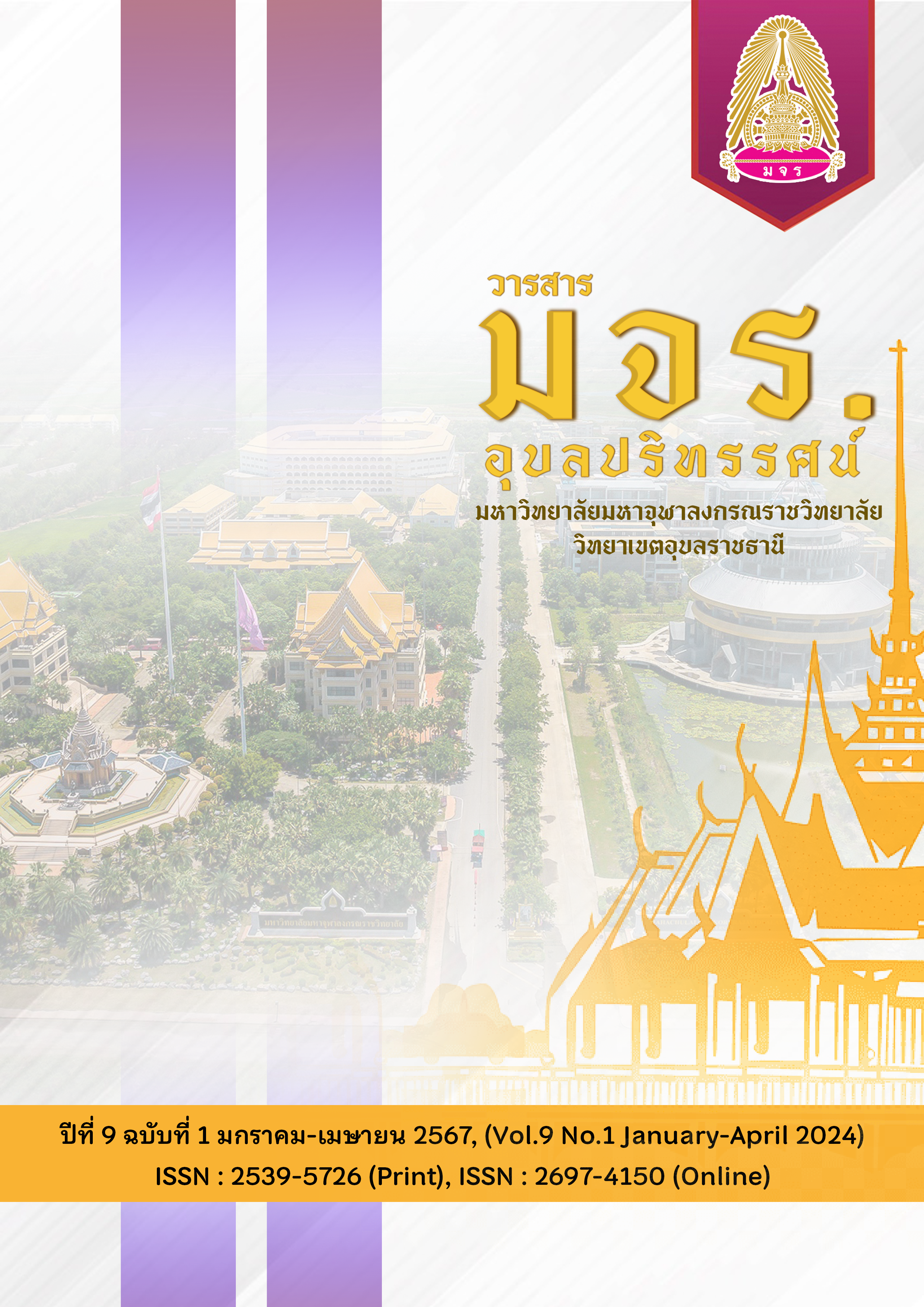DEVELOPMENT OF FLIPPED CLASSROOM TEACHING MODEL TO IMPROVE RESEARCH ABILITY OF UNDERGRADUATE STUDENTS
Main Article Content
บทคัดย่อ
The objectives of this research were 1) to examine the factors to improve research ability of undergraduate students, 2) to develop flipped classroom teaching model to improve research ability of undergraduate students and 3) to examine the results of flipped classroom teaching model to improve research ability of undergraduate students. The methodology was divided into 3 phases. A total of 150 students and 5 lecturers of educational research methods course in semester 1 academic year 2023 from Yulin Normal University who’ majoring in primary education were obtained as population for eliciting factors affecting research ability. Phase 2 required the target group of 3 experts to confirm of developed instructional model within 4 standards i.e., 1) utility 2) feasibility 3) propriety and 4) accuracy. The final phase was for examining the results of implementing the developed instructional model, the data of which were collecting from 46 students who enrolled in educational research methods course of Yulin Normal University. The research tools were 1) a set of questionnaires for students, and lecturers’ interview, 2) a set of questionnaires for flipped classroom teaching model,
3) lesson plans using flipped classroom teaching model, and 4) Scoring rubrics form
for research ability of Yulin Normal University undergraduate students. Data were analyzed by frequency, percentage, mean score and standard deviation. Scoring rubrics were employed to assess sample group’s research ability.
The results revealed the following 1) The findings from the study highlight two key factors influencing research ability in educational research methods courses: internal and external factors. Internal factors include interest, motivation, and physical health, while external factors encompass teaching methods, time management, and environmental factors. These factors synergistically impact students' research skills., 2) A flipped classroom teaching model was developed and evaluated by specialists, meeting utility, feasibility, propriety, and accuracy standards. The model comprises five components: principle and rationale, objectives, contents, teaching methods and materials, and evaluation. This model aims to enhance vocational undergraduate students' research ability effectively and ,3) The effectiveness of the flipped classroom teaching model in improving undergraduate students' research ability is underscored by the influence of internal and external factors. Teachers play a crucial role in fostering students' research skills by addressing these factors and emphasizing practical evaluation methods.
Article Details
References
Chang. (2021). Analysis of the value of the flipped classroom teaching model in higher education. Journal of Jilin College of Commerce and Industry.37(4),121.
Chen, Y. & Zhao, C. L (2014). Research on instructional design and application based on flipped classroom model. Modern Educational Technology (02), 49-54.
Dai, N. (2016).Cold thinking about flipped classroom : values and limits. Inner Mongolia Normal University Journal , (6),13-18.
Han. (2013). The bottleneck of flipped classroom development in China and the choice of road. Journal of Jiangsu Radio and Television University(02),41-44.
He & Ou &Gao(2014). Inspiration of USA Universities′ Inverted Classroom Teaching Model. Research on Higher Engineering Education,(2).148-152
Huang, Y.Q. (2013). Research on micro-course teaching design model in flipped classroom. Software Guide (06), 157-159.
Li & Liu(2013). SWOT analysis of the application of the flipped classroom teaching model.
China Education Skills Equipment.(03),88-89.
Li, Xin. (2015). Research on Teaching Quality Evaluation System of Flipped Classroom - Drawing on the Evaluation Criteria of CDIO Teaching Model. Research on Electrochemical Education (03), 96-100. doi:10.13811/j.cnki.eer.2015.03.014.
Song & Yu(2014). Research on Project- based Teaching Model Based on Flipped Classroom. Journal of Distance Education(1).96-104
Vogel, I. (2012). Research capacity strengthening: learning from experience. UK Collaborative on Development Sciences.
Wang, H., Zhao, W., Sun, L.H. & Liu, H.H.. (2013). Design of Flipped Classroom Teaching Model - Based on Typical Case Analysis at Home and Abroad. Modern Educational Technology (08), 5-10.
Wang, W. & Dong, Y. K.. (2018). Flipped classroom: Opportunities, challenges and development path. Theatre House (23), 152-153.
Wang, Y. Liu, H. l.(2017).The Improvement of Elementary School Teachers' Research Ability Logical Starting Point and Countermeasures. Teaching and management.21.
Wen, Y.l. Zhao, D. (2015)The Spiritual Imperative of Flipped Classroom Change from Education Informatization. Contemporary Education Science,(24),50-52.
Xu, D. S.. (1999). The current situation of educational research ability of high teacher students and its cultivation. Journal of Hangzhou Normal College(04),116-117.
Ye, B.(2014). What the flipped classroom subverts : On the value and limits of the flipped classroom. Curriculum-Materials-Methodology,(10),29-33.
Zhang, (2014). Design and application of task-based flipped classroom teaching model. China Education Technology Equipment (22), 61-62.
Zhang, F., Li, Q., Wang, Z., Yan, Q. & Xu, Y. Q.. (2014). How postgraduate students cultivate independent scientific research ability. Northwest Medical Education (01), 77-78. doi:10.13555/j.cnki.c.m.e.2014.01.075.
Zhang, J. L., Wang, Y. & Zhang, B. F.. (2012). Research on flipped classroom teaching mode. Journal of Distance Education (04), 46-51. doi:10.15881/j.cnki.cn33-1304/g4.2012.04.008.
Zhang, W.Z.(2012). Research on Flipped Classroom Teaching Model. Journal of Distance Education.211(4),46.

